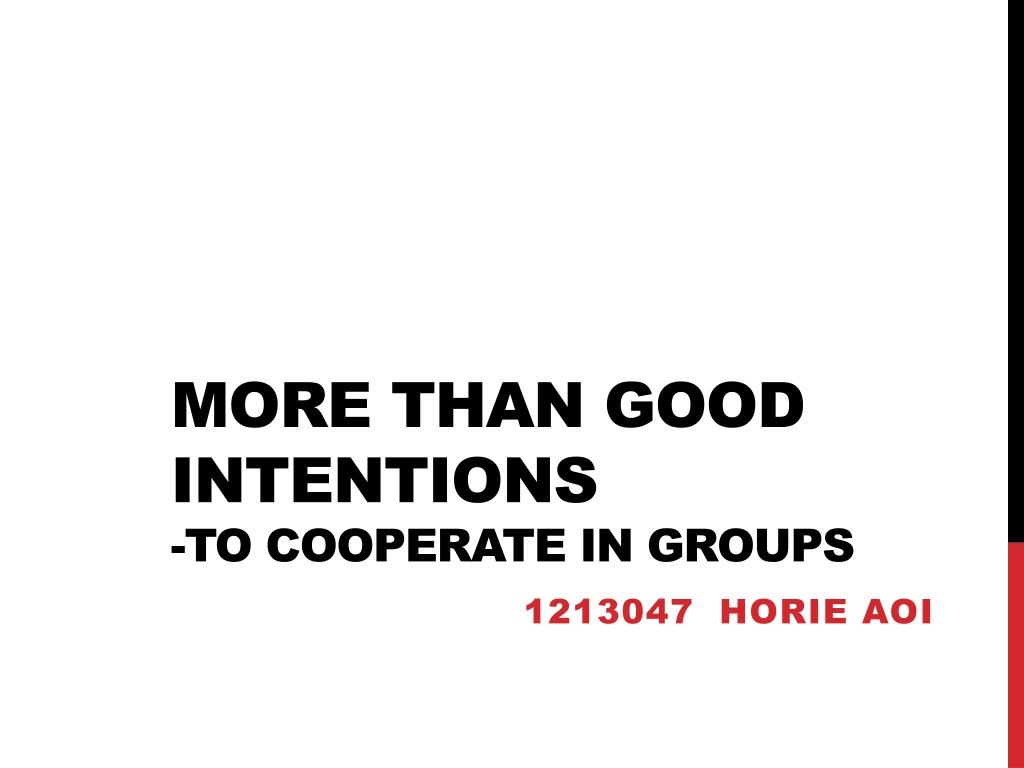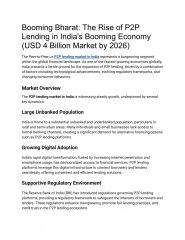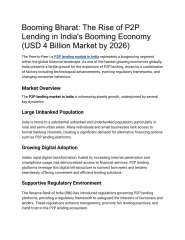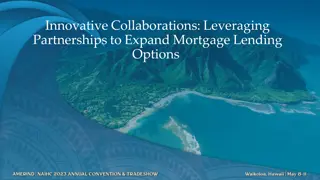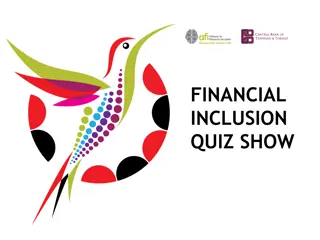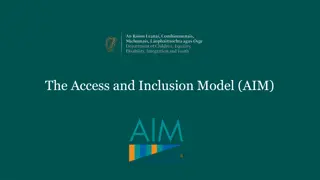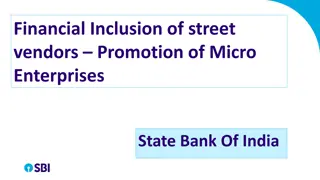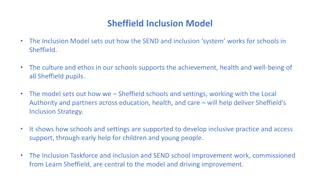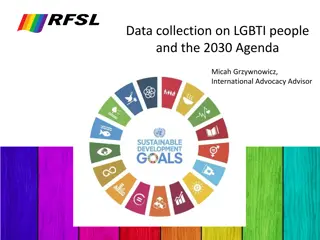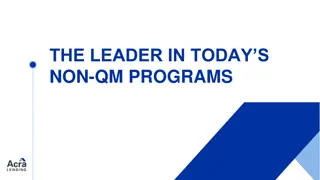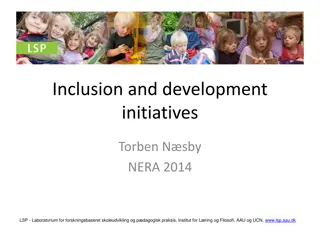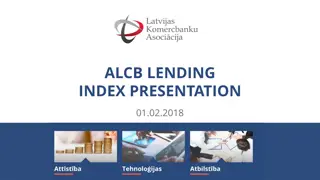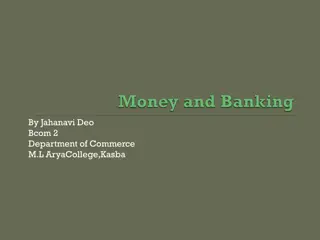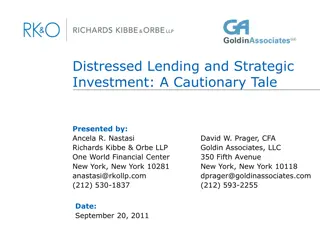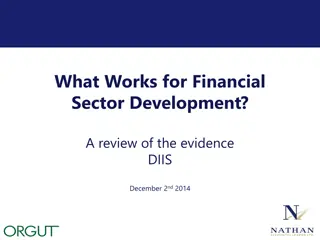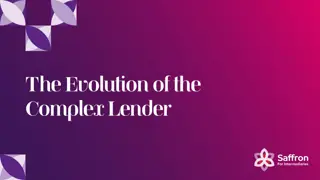Unlocking the Potential of Group Lending for Financial Inclusion
Exploring the dynamics of group lending models in financial inclusion efforts, this content delves into the strengths and weaknesses of cooperative borrowing, borrower identification challenges in developing countries, and the innovation of group liability. It discusses the importance of individual loans, trust-building in lending relationships, and the broader impact of community involvement in microcredit initiatives.
Download Presentation

Please find below an Image/Link to download the presentation.
The content on the website is provided AS IS for your information and personal use only. It may not be sold, licensed, or shared on other websites without obtaining consent from the author. Download presentation by click this link. If you encounter any issues during the download, it is possible that the publisher has removed the file from their server.
E N D
Presentation Transcript
MORE THAN GOOD INTENTIONS -TO COOPERATE IN GROUPS 1213047 HORIE AOI
CONTENTS What About the Weakness of the Crowd? The Vaunted Group Lending Model Who Is the Borrower? How Do We Know the Borrower Can Pay? What If Things Go Badly? Other Advantages of Group Lending The Problem with Group Liability Less Is More : Simple Individual Loans Could Be The Answer The Evidence What Makes Group Lending Tick? A Game of Trust The Importance of Hats Meetings Matter The Next Step(s) https://www.google.co.jp/
WHAT ABOUT THE WEAKNESS OF THE CROWD? The Community Leader women s obligations to the bank were bound up with those of their fellow group members. They reached into their pockets and made payments on the delinquents behalf. Did she really have to pay such penalty for borrowing? Is there a better way?
THE VAUNTED GROUP LENDING MODEL Where is the sense in a lending program that effectively penalizes the best clients by making them cover for the deadbeats? Instead of lending to individuals, the microcredit organizations grew by lending to groups. The group as a whole is liable for each member s loan. It is a common practice to pull aside the well-behaved borrowers from a defaulting group and continue lending to them.
THE VAUNTED GROUP LENDING MODEL The group lending model solves three problems that historically kept banks from serving the poor. Who is this person who wants to borrow? How can we be sure she will make her payments? What can we do to get our money back if things go sour? Developing countries have so few resources to help address these questions. The great innovation of the group lending model was to bridge these gaps.
WHO IS THE BORROWER? In the United States Address to vehicle, voter registrations, a credit score In Ghana Name spelling and order vary. Instead of a house number, street name, and zip code. The single biggest gap is the lack of credit reporting agencies. It is virtually impossible to learn about a person s economic history.
HOW DO WE KNOW THE BORROWER CAN PAY? In the United States People secure loans with collateral like houses, cars, and jewelry. People seeking entrepreneurial loans are often required to submit a detailed business plan. In Ghana An inherited piece of land is offered up to secure a loan. Verifying income is no easier than proving ownership.
HOW DO WE KNOW THE BORROWER CAN PAY? The key here is that clients know one another better than the bank knows any of them. Group members can monitor one another. Group lending clients feel pressure to perform because they risk damaging their social standing if they miss payments. The group lending model finds leverage to keep borrowers on track.
WHAT IF THINGS GO BADLY? It s hard for delinquent borrowers in development countries to drop off the map and escape their obligations. by comparison, it is very easy to disappear in Ghana. Delinquents are hard to track down regardless of where they live or how much they ve borrowed. In a group, everybody will be barred from further borrowing if anybody is late.
OTHER ADVANTAGES OF GROUP LENDING Group lending also makes credit a more appealing business proposition by controlling lenders costs. Banks benefit by meeting with entire groups at once. The bank does not need to keep detailed records about each individual client. Loan officers save a lot of time and manage to serve a lot more clients.
OTHER ADVANTAGES OF GROUP LENDING Microcredit advocates tout two more benefits of the group model. The opportunity to integrate complementary interventions into lending programs. Client empowerment. Some banks have successfully piggybacked auxiliary programs onto their credit programs. They will work hard to honor their commitment, not just out of respect for the behaviors themselves, but out of solidarity with one another.
THE PROBLEM WITH GROUP LIABILITY Instead of making your payment at a teller window, you have to wait two hours while your credit officer meets with other clients. Over the term of your loan, that amounts to a lot of wasted time. The group lending system quietly encourages the clients with modest needs to borrow excessively. Borrowers level the playing field by taking larger loans than they need.
LESS IS MORE : SIMPLE INDIVIDUAL LOANS COULD BE THE ANSWER More important, it isn t the best way to help the people. Muhammad Yunus idea was to build a new version of microcredit that retained the benefits of group lending. In 2002 Yunus dubbed it Grameen It made only individual liability loans. Clients were no longer forced to cover for one another.
LESS IS MORE : SIMPLE INDIVIDUAL LOANS COULD BE THE ANSWER Group lending proved a powerful material incentive for clients to screen, encourage, monitor, prod, and ultimately help one another to make their payments on time. Grameen was a hit and made a global change.
THE EVIDENCE The success of Grameen demonstrated that individual-liability microloans could work; that was enough to get people excited. Lenders either did it one way or the other, and very few were interested in finding out rigorously which system worked better for them. Will group liability attract better clients? Will it ensure that clients use the funds how they said they would and put enough effort into their businesses? Will it help us recover from clients in any case?
THE EVIDENCE 169 existing borrowing groups Convert to individual-liability for future loans Continue under group liability as usual New clients Individual- liability Group-liability A hybrid
THE EVIDENCE Dropping group liability lifts a burden off clients shoulders. The groups that converted to individual liability attracted more new members and had fewer dropouts than the ones that continued with group liability. clients were less likely to force one another out of groups. People started inviting their close friends and relatives to join Green Bank. Individual-liability borrowers were more likely to be thrown out of the group by bank staff. Individual-liability and group liability groups had the same repayment rates across the board.
THE EVIDENCE To serve such a vast spectrum of ambitions and needs, we need variations on the theme. Why should we expect a single type to meet the needs of the billions of poor people around the world? We need to be curious and relentless. We need to develop new programs, tweak existing ones, and find out what makes them tick. More important, does it serve the poor better? The good news is that we don t need to be fatalistic.
WHAT MAKES GROUP LENDING TICK? A GAME OF TRUST What really fuels the group lending model? I set up an experiment with some of FINCA Peru s loan clients. double ?
WHAT MAKES GROUP LENDING TICK? A GAME OF TRUST The trust game: Regardless of how much she receives, B will not pass anything back, because that is the profit-maximizing move. And knowing this, A will not pass anything to B. Some people pass because of social norms; others may pass because they fear retribution after game is over. The game wasn t just capturing a dynamic between the members of particular borrowing groups, but getting at real and substantive personal characteristics.
THE IMPORTANCE OF HATS Would a completely hatted group get along better than a half-hatted group? Would members be more supportive of, or more attentive to, one another? And if so, would they be better borrowers?
THE IMPORTANCE OF HATS How social connections made the group tick? It seemed to me that groups whose members were close might have an advantage. If they sat in one big circle together, maybe they would know more about one another, and be able to push each other more effectively toward making payments. I settled on two types of connectedness. A culture index A geographic measure
THE IMPORTANCE OF HATS Clients with higher culture and geographic scores were more likely to make their payments on time and significantly less likely to drop out of their groups. A well-connected groups were more likely to forgive delinquents than poorly connected ones. Clients in a well-connected group were monitoring one another more effectively. Well-connected groups had higher repayment rates.
MEETINGS MATTER How does the frequency of group meeting actually impact the group s success? This answers have big implications for the design of group lending programs. Designed an RCT to explore the relationship between meeting frequency, group dynamics, and client default. Thirty groups got the standard weekly meeting. The remainder got monthly meeting.
MEETINGS MATTER There was no difference in default or dropout rates between weekly and monthly repayment clients. The more frequent meetings had slowly but surely built stronger groups. Members of weekly repayment groups were more likely to socialize together and more likely to say they d help one another in the case of a health emergency. The weekly repayment groups was also reflected in their economic choices.
MEETINGS MATTER An outside force (the lender) coming in and requiring weekly, rather than monthly, meetings had a noticeable effect on clients ability to share risk. After the initial loans were repaid, clients from the weekly meeting groups were significantly less likely to default on future loans than their monthly meeting counterparts. Frequent group meetings led to repayment.
THE NEXT STEP(S) Microcredit has already succeeded in one important way: It has captured the world s attention. The question is: Are we using the right tools? Find out what really drives good behavior, and push it. Find out where the fat is, and cut it. Refining lending practice is only one part of the evolution of microcredit. Another is lenders expansion into offering a broader range of services to their clients.
